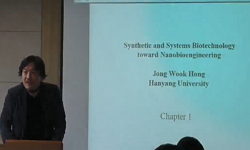The polymerase chain reaction (PCR) was used for detection of human papillomavirus (HPV) in paraffin-embedded tissue. Tissues stored as paraffin blocks were a potential source of DNA for retrospective clinicogenetic analysis. Sections in 6 ㎛ (three ...
http://chineseinput.net/에서 pinyin(병음)방식으로 중국어를 변환할 수 있습니다.
변환된 중국어를 복사하여 사용하시면 됩니다.
- 中文 을 입력하시려면 zhongwen을 입력하시고 space를누르시면됩니다.
- 北京 을 입력하시려면 beijing을 입력하시고 space를 누르시면 됩니다.
한국인 여성의 자궁경부암에서 PCR을 이용한 Human papillomavirus 아형의 검출에 관한 연구 = Detection of Human Papillomavirus Subtypes in Koera Woman Uterine Cervix Cancer Using Polymerase Chain reaction
한글로보기https://www.riss.kr/link?id=A30061579
- 저자
- 발행기관
- 학술지명
- 권호사항
-
발행연도
1994
-
작성언어
Korean
-
주제어
HPV ; PCR ; Uterine cervix
-
KDC
510
-
자료형태
학술저널
-
수록면
143-156(14쪽)
- 제공처
-
0
상세조회 -
0
다운로드
부가정보
다국어 초록 (Multilingual Abstract)
This study detected HPV DNA in four cases. which broke down to HPV 16 in two case of uterine cervix carcinoma in situ and two case of uterine cervix squamous cell carcinoma, no HPV type in the remainder.
Histologically, HPV types 6, 11 are mainly detected in benign genital warts and lowgrade cervical dysplasias, squamous cell carcinoma frequently contained HPV 16, whereas, HPV 18 was present in adenocarcinoma, adenosquamous cell carcinoma and small cell carcinoma of the cervix.
These results indicate that cervical cancers might be clinically influenced by the differences in sutible of the infecting HPV.
The polymerase chain reaction (PCR) was used for detection of human papillomavirus (HPV) in paraffin-embedded tissue. Tissues stored as paraffin blocks were a potential source of DNA for retrospective clinicogenetic analysis. Sections in 6 ㎛ (three or five) thick cut from paraffin blocks of 29 uterine cervix dysplasia, 34 uterine cervix carcinoma in situ, 42 uterine cervix squamous cell carcinoma and 10 uterine cervix metaplasia samples were deparaffinized and incubated at 37℃ for 48hrs. in the lysis solution. Following organic extraction and alcohol precipitation, and extracted DNAs were identified by gel electrophoresis. These DNAs carried out PCR. After repeated cycles of specific oligonucleotideprimed extension of viral DNA with thermophilic DNA polymerase. the type of HPV present was then determined on the basis of the size of the ethidium-bromide stained band visible after agarose gel electrophoresis : for HPV 6 is 263 bp. for HPV 11 is 144 bp, for HPV 16 is 601 bp. and for HPV 18 is 360 bp.
This study detected HPV DNA in four cases. which broke down to HPV 16 in two case of uterine cervix carcinoma in situ and two case of uterine cervix squamous cell carcinoma, no HPV type in the remainder.
Histologically, HPV types 6, 11 are mainly detected in benign genital warts and lowgrade cervical dysplasias, squamous cell carcinoma frequently contained HPV 16, whereas, HPV 18 was present in adenocarcinoma, adenosquamous cell carcinoma and small cell carcinoma of the cervix.
These results indicate that cervical cancers might be clinically influenced by the differences in sutible of the infecting HPV.
동일학술지(권/호) 다른 논문
-
칼슘길항제와 혐수성 산소 라디칼 제거물질이 백서 피부판 생존에 미치는 영향
- 조선대학교
- 양정열
- 1994
-
Southern Blot Hybridization법을 이용한 악성 림프종의 면역유전형에 관한 연구
- 조선대학교
- 전호종
- 1994
-
토끼의 간뇌에서 NPY 분비세포에 대한 면역조직화학적 연구
- 조선대학교
- 정주현
- 1994
-
신성고혈압 흰쥐에서 측뇌실내 Captopril이 Bradykinin의 중추승압효과에 미치는 영향
- 조선대학교
- 정태호
- 1994




 RISS
RISS






